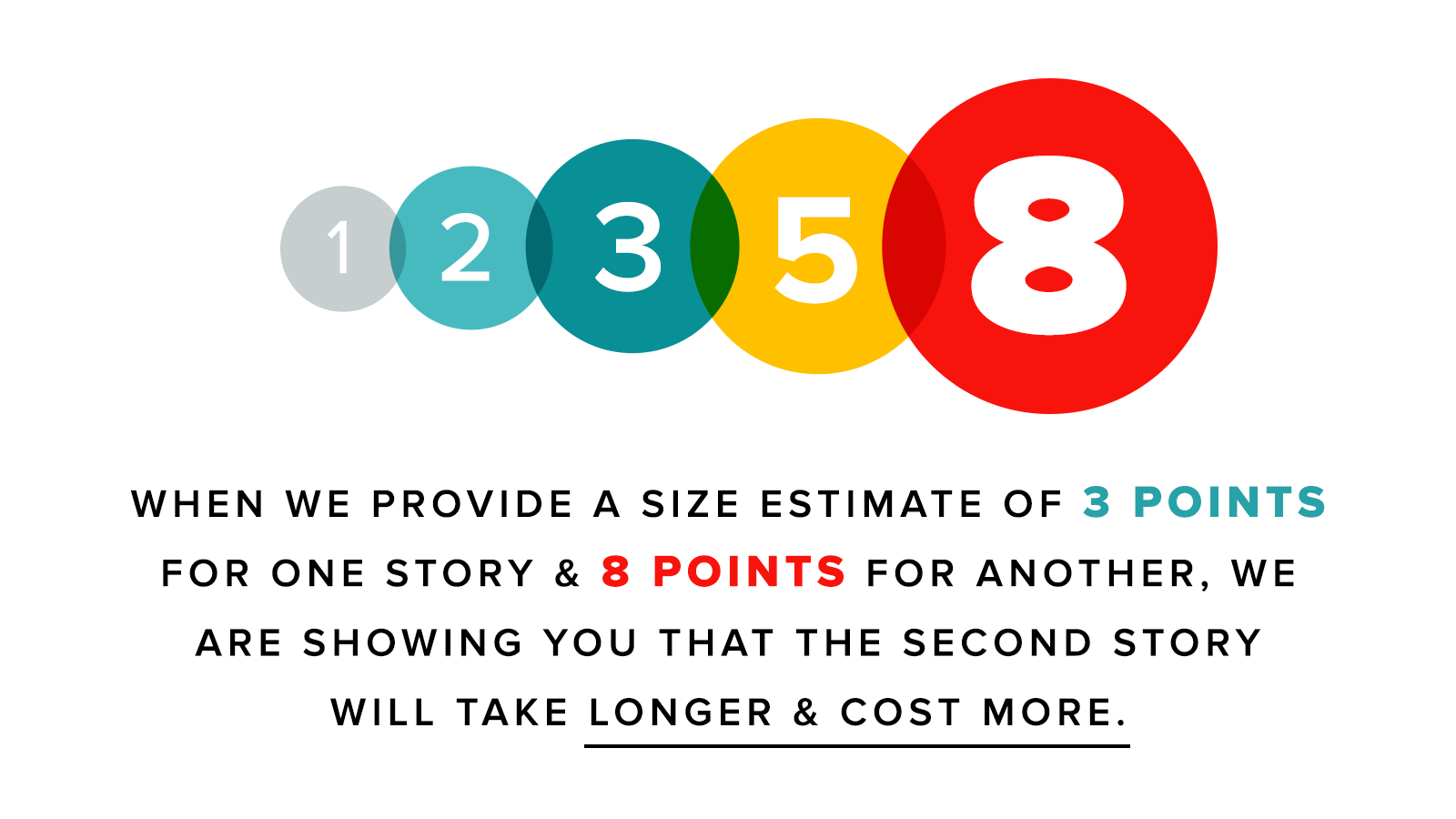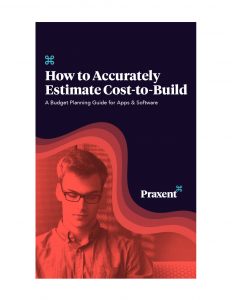
13 min read
How much does custom software cost?
How much does custom software cost?
The short answer: high quality custom software development isn’t cheap. However, the value you get from the final product should ideally align with what you paid.
Every custom software development project is different, and depending on what you’re building, your cost will vary considerably. Even average estimates for cost on similar types of software projects, (such as a web app or a mobile app) will range. We’ve seen online estimates range from as little as $30,000, to as much as $700,000.
it’s almost impossible to simply perform a Google search and get an accurate software development cost number that you can present to stakeholders. Custom software development covers a wide range of projects, and just like its name, the price is “custom.” Your project will not look like the next company’s project, and there’s no way to estimate how much a software project will actually cost until you get the numbers from individual providers (assuming you are looking to outsource the project to a development firm).
To complicate things, every firm is a little different on how they structure their accounting and their teams. Some development companies charge an hourly rate, while others charge per project. Some companies offer a large team of experts, while other companies will offer two or three team members. One provider may have teams overseas, and others use only domestic talent. These are only a few of the variables that can impact the potential rates of custom software development projects.

With all of these variables in play, it pays to tread carefully when beginning your search for development resources. We’ve heard horror stories of businesses who were unpleasantly surprised by how much their custom software cost – too often, the price they paid wasn’t aligned with what they expected to receive. On top of that, research suggests that fewer than a third of all projects are actually completed on time and on budget, and an average of $97 million is lost for every $1 billion invested, due to poor project performance.
That being said, there are ways to protect your project and your company from these staggering failure numbers. By carefully choosing a development partner, using a point-based estimation system to calculate costs, and staying involved throughout the project, you can rest easier knowing that your money is not going to waste.
Free Budget Planning Guide for Apps & Software
When it comes to budget and timeline, projects built around guesswork are doomed to fail.
Download our free whitepaper on how to accurately estimate cost-to-build, and learn how product planning can be predictable as well as flexible.
Are Custom Software Development Rates Really Worth It for Your Company?
Before you begin to think budgets and costs, realize that custom software isn’t always the right answer. A standard software solution, such as a CRM, may be adequate for your project. However, if you need software that is performing a unique task, creating innovative functionality, or helping to define a company’s brand, custom software development is in order.
>>Read on: Should you choose an off-the-shelf software or build a custom one?
Companies must thoroughly assess the risks and benefits of custom software development projects, even if the need for the software exists. One of those risks includes choosing a development partner to help shoulder the heavy lifting. When you’re weighing the pros and cons of your idea, tt’s important to discuss the topic of cost directly with prospective custom software development firms to see how they approach it. A failure to adequately plan for budget factors can derail a project and send the cost soaring if best practices aren’t put into place.
Software Development Costs Can Be Managed
Aligning the end value of a software development project with its upfront price is not an easy task, but as statistics suggest, it is one that is too often neglected.
At Praxent, we place an emphasis on project sizing in order to keep costs as closely related to end value as possible. Project sizing is an estimation process that allows us to be more precise when determining how much time and resources a project will take. With this method, accurate predictions about costs of custom software aren’t so hard to achieve.
Project Sizing with Story Points: Calculating the best value for your budget
The story points system categorizes feature requests (or “stories”) on a scale of 1 to 13 points. A “one-point story” is a task that should take little time and effort. In contrast, a “thirteen-point story” is a much more complicated and time-consuming task. Most stories average about three points.
In this setup, the decision-maker is in the position to review the points estimated for software features and decide, “Yeah, that’s worth doing!” or “No, that’s probably not going to work out.” This sizing system helps to bridge the communication gap between the party in need of software, and the development team creating it.
Just like other aspects of agile software development, the goal is to put decision makers and clients in the driver’s seat, and to align the cost of software projects with the end value. With accurate and flexible sizing, you’ll ultimately make smarter, more informed decisions as the project evolves.
Point-sized accuracy
When provided a size estimate of three points for one story, and eight points for another, it is implied that the second story will take longer and cost more.
This point sizing is determined using the Fibonacci sequence, which adds the last two numbers together to determine the next one in the sequence.
1, 2, 3, 5, 8, 13
- The first number is one, so 1 + 1 = 2
- The second number is two, so 1 + 2 = 3
- Then, 2 + 3 = 5 and so on…

The beauty of using the Fibonacci Sequence as a sizing model is that the span between numbers grows exponentially as the numbers increase. The difference between 8 and 13 is the greatest because those numbers are highest on the scale. While story points can, in theory, continue getting higher indefinitely, we find that any story point number greater than 13 is a feature or task that needs to be broken down into smaller parts.
For software developers, these markers serve as a flag. When the initial estimate is already at 8 points, you know adding just a little bit more will result in a bigger jump to the next point level — 13. Technology is very fluid and the size of the job might change overnight, so an 8 or 13-point feature might not be worth pursuing.
The use of the Fibonacci Sequence in software development also helps prevent cost and resource allocation underestimations. If the developer determines a story to be at least six points, the actual estimate bumps up to the next number in the Fibonacci Sequence — eight.
Why use points to determine custom software costs?
Custom software development is like no other service. It is creative, and materials used to build platforms are not fixed. It’s not something you can buy at the store or purchase in bulk to get a discount.
Developers work with open-source programs and computer languages that change constantly. Sizing in relative terms allows us to provide an estimate that is more accurate. In fact, at Praxent we hit the target about 95 percent of the time.
Although you can’t look at a point estimate and automatically know how much of a dent that story will put in the budget or exactly how much time it will take to complete, sizing actually allows us to be more precise when estimating the cost of a custom software development endeavor. If the team manages to complete around three points every sprint, we know an eight-point job will take about five or six weeks.
“Through sizing, we empower our clients with knowledge. They get a better sense of how the process evolves, so they can make smart and informed decisions that affect the end result.” – Ryan Ostrom
What Custom Software Development Rates Will Get You
Now that you’ve begun to grasp the complexity behind gathering an accurate estimate of how much custom software can cost, it’s worth considering what you’ll gain from that investment. Here are some elements you should expect to receive from a development partner:
- Idea review to determine if your software idea is viable
- Design consultation to align your vision with what is technically possible
- Development expertise to bring your ideas to life
- Testing of the software to ensure it meets usability and functionality standards
- Implementation to help launch the software in its intended environment
How a custom software development team approaches the above will vary. Each will have their own methodology, timeline, and expectations for client involvement. Again, it’s a good idea to discuss these factors upfront before you pay a dime. Be sure their techniques, technologies, and people align with your needs. You are investing your time and dollars into a product that is intended to create value – it should be exactly what you wanted.
Outsourcing software development projects is often a smart decision that produces faster results that are more closely aligned with business strategies and budgets. Be sure you choose the right custom software development firm who uses best practices that respect your budget without compromising quality.
How to Get the Most out of software development costs
Stick to the Plan
It’s easy to get down the path of development and start to think you need something more. Like when remodeling a home, there are always things to add onto your project. Even if your new idea seems like a small modification, it can add hours to the project and impact other aspects of the functionality. One modification often quickly leads to more and before you know it, you’ve deviated far off the planned path – and budget.
The more you can adhere to the original plan, the better. In order to do that successfully, prior planning is critical. Your development team should have the processes and methodologies in place to painstakingly account for every possibility. Answering questions, and lots of them, should be expected. If your team isn’t asking you dozens, even hundreds, of questions before your project begins, red flags are waving.
Expect Change
Years of experience have taught us that business goals and users’ needs will likely change before a project launches. With this in mind, we’ve found it valuable to purposefully size projects in a way that leaves enough room for timely course corrections while maintaining forward momentum.
Nothing is constant except for change. It can’t all be anticipated, but its should be expected. Some of the possible changes that can occur after receiving the initial cost of the software project:
- Project scope
- Requirements
- Resource capacity and/or availability
- Skill sets
- Market influences
- Competitive drivers
- Cost of goods
- Parts delays
- Customer demand
- Project priorities
- Legal issues
- Natural disasters, weather events, etc.
With every change, rates can quickly escalate. If you decide, for instance, that you need to add a security feature to your new application and it wasn’t in the original scope, your project team will have to develop new requirements to make that happen That takes time and time is money.
Ask your prospective custom software development team how they approach change – what safeguards or cushion do they have in place to ensure small, moderate and major changes don’t send the project into overdrive?
>>Find out how to effectively predict and manage change: Read Software Requirements Gathering: A Formula for Success
Mind the Timeline
Delays are inevitable. One way to ensure they don’t send costs soaring is to build them into the timeline. Your development team should pad the timeline enough to allow for delays. The more you can stay on track, the better you can stay on budget.
If the scope of the project is well-documented, it will be easier to mind the timeline. Remember: every added feature, functionality or modification will bump out the project timeline (and software development costs) unless these types of changes are already built into the timeline.
Be sure each goal is given a realistic timeframe for completion. Some project management experts recommend using a gated phase approach where the next phase cannot begin until the previous phase has been successfully completed. This means all teams be aligned and collaborating to ensure a smooth handoff. It’s important to be able to identify potential issues before they become major headaches. Your team should have excellent communication practices in place to keep everyone on the same page so nothing is a surprise.
The Proof Is in The Product
Your custom software may be what defines your company. It may be the first thing customers or prospects see of your brand. Your end users’ job may depend on how well that software functions. Plenty is riding on getting this one right. Be sure you choose a custom software development partner with rates you can afford, but even more importantly, choose a partner that will create work you can champion.
Learn More
If you are actively seeking a software solution to deal with a problem or expand on an idea, schedule a free consultation with our team and we will walk you through our points-based software development pricing process personally.




Leave a Reply